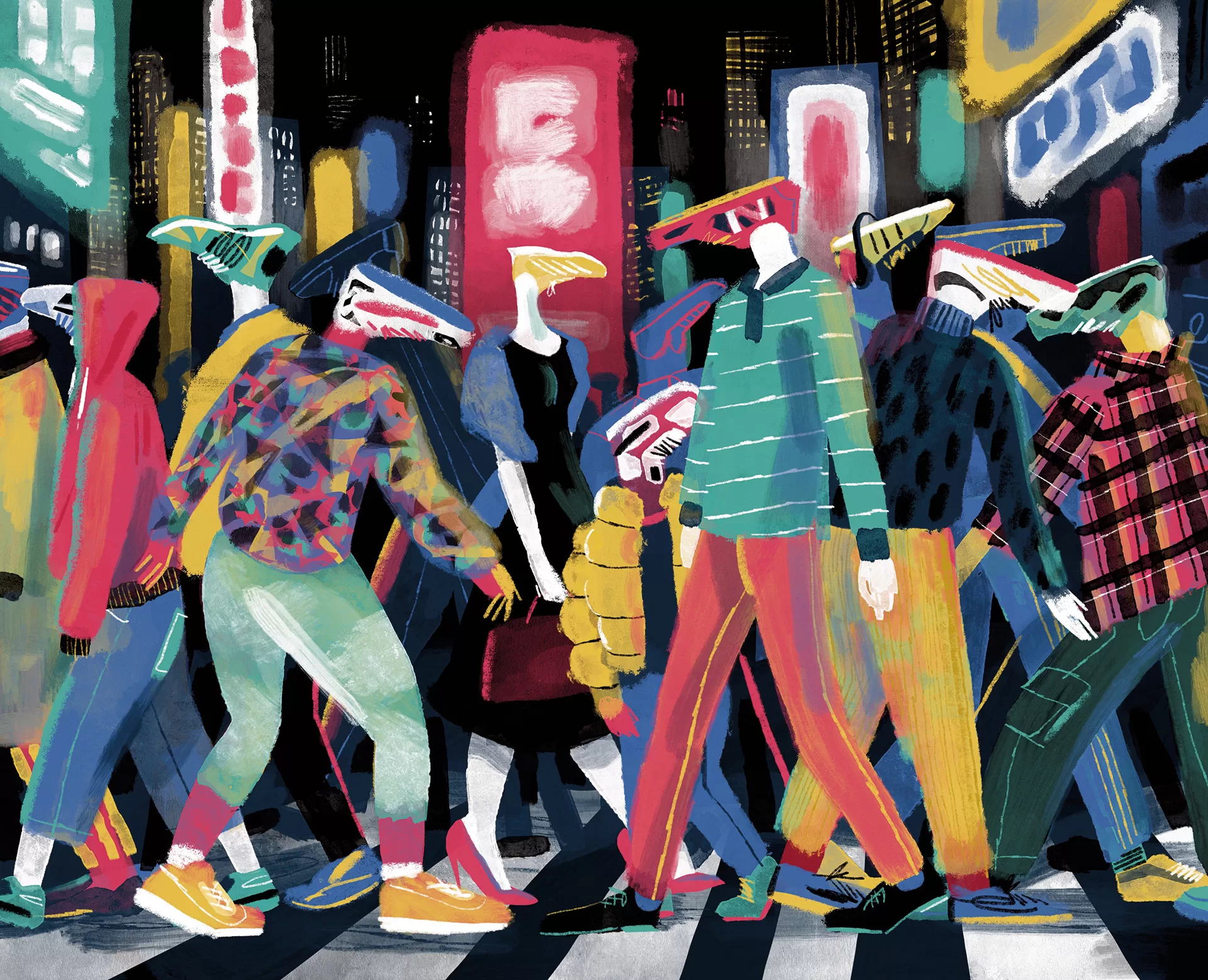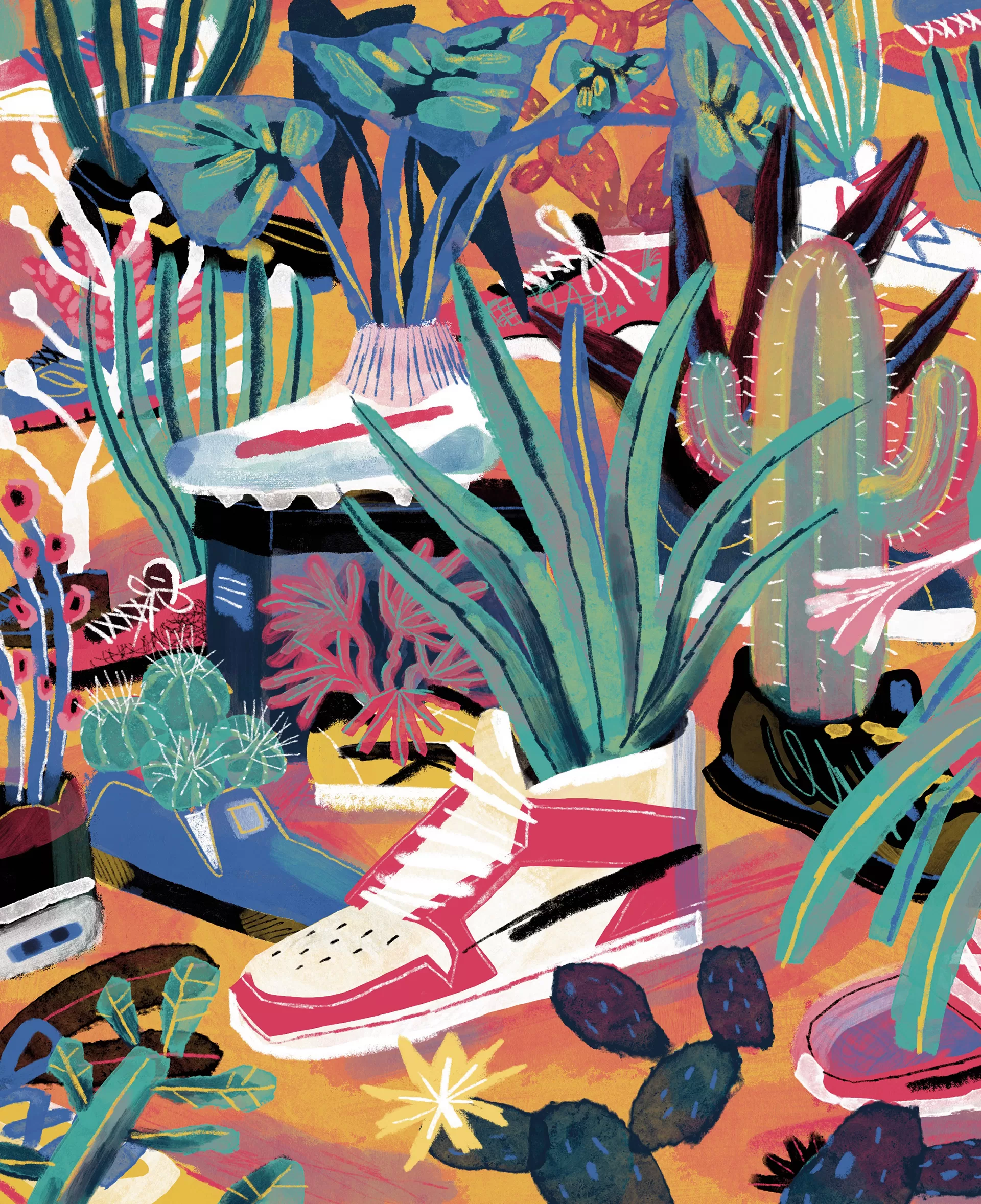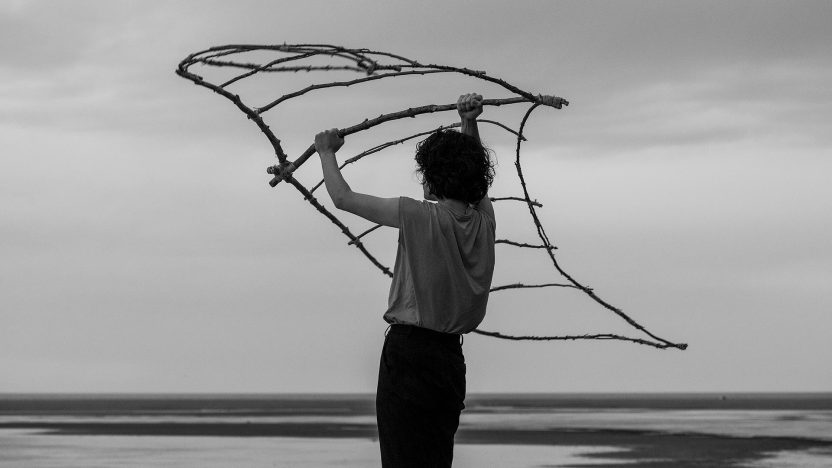
The wings on my feet
Few things give off more immediate vibes on who we are than the things we wear, and shoes are often the item our eyes fly off to first. What goes on behind their creation?
In conversation with Denis Dekovic by Simone Cesano
Illustrations by Marco Brancato
Together with the emergence of a world society, we have witnessed the rise of the capitalism-driven global industrial complex. Be it manufactured or uncovered, fabricated or real, the hype generated by all sorts of products has moved the hearts and wallets of billions. Sometimes, the things produced are objects we need; other times, it’s stuff we want. Gadgetry we so ardently long for that we merrily stand in line for hours and are willing to shell out a lot of hard-earned money for.
But is it all gold that which glitters? It just so happens that yes, there are times when that is indeed the case. Not just gold shimmering for the light games’ sake, though, but actual care, attention, and craftsmanship that creates something beautiful — something that makes our desires much more interesting to peruse.
One of these classes of objects is sneakers, the footwear with which we instantly identify ourselves (and others); arguably more than any other piece of clothing. Denis Dekovic, a renowned designer and creative director — with names like Nike and Adidas on his resume — tells us more about why that is.
Simone Cesano: Branded sneakers were a prominent and unsatisfied desire in my teenage years. Did that same desire drive what you became later in life?
Denis Dekovic: For sure. You know, I was born into a family of athletes. So, from a very young age, it was all about sports growing up. While my parents played and toured, getting on the buses to go for the games that were away games, etc. But I also love drawing and love imagination. The first toy I got was a ball. So sport was not only part of our lifestyle, but it became the best game a kid can wish for. And then the second toy I got must have been colored pencils and some sketchbooks because the only other memory of my early years I have is me drawing a lot. Back then, one of my heroes was Michael Jordan, and that’s also the era when basketball superstar players and shoes became a reality. So shoes became a platform where sport and imagination met. So not only was it a passion of mine to wear the shoes that my hero had, so that I could feel a little bit like him; I also realized that someone needs to design them. I wanted to be that guy. The designer behind the most iconic sneakers in the world. That became my dream, and I’ve been chasing it since.
What is it about sneakers that makes people line up for them? It seems like a lot of people are willing to make sacrifices, like paying higher prices for limited editions and even having specialized bots, like you see in high-speed trading.
I mean, sneakers are objects of desire, especially for younger generations who may not have the means to afford more expensive items. The sneaker is the most premium luxury item or experience you can get. So that’s part of the deal; it’s just one of those affordable objects of desire. On top of that, sneakers have a great combination of style and technology. They make us feel cooler but also faster and stronger. Just like a superhero suit, they make us feel like we can jump higher, and run further and faster. Sneakers are a gateway to coolness. All this makes them objects of desire that can also help you be the coolest kid in school on Monday, the coolest kid in town on Saturday, or they allow you to feel like you’re part of a group. If you like sports and your hero wears sneakers, or if you like music and your music hero wears a suit and sneakers, having the same sneakers makes you feel a little bit like that.
Does it resonate with you that they’re often one of the first things you look at in people? I remember reading that Giorgio Armani said that if you want to know what a person is like, look at their shoes. Do you think they also help you set yourself into a certain tribe or another?
Yes, absolutely! Apparel is a way of expressing yourself. I do the same: the first thing I look at is what people are wearing and what kind of shoes or sneakers they have. And by the sneakers you wear — after many years of experience — I already kind of know either your personality or how you feel that day and what you want to communicate. And so, for me, sneakers are really not just objects of desire that make you feel special but also tools you can use to fully express how unique your personality is. Just like a mask, shoes can be used to create different expressions. For example, if you’re outgoing and flamboyant, a pair of bold sneakers might be the perfect match for you. Alternatively, if you’re an introvert and want to appear more confident or assertive, you might choose extravagant sneakers to help you to break out of your shell or more “down to earth” sneakers if you want to blend in.
So, we’ve talked about what sneakers mean for people. But at the same time, it’s a job for you to be able to tell what people might want to own and what they might want to buy. How do you look into the future, and how do you see the signs of desire today that will be explicit in two years? Or how do you perhaps try to create desires that will be true in two years?
It never starts with me thinking of a shoe. I do not think of the shoe because the shoe is just a projection, a connection to something. It’s an object that connects a person with how the person wants to feel or how the person wants to live, or who the person wants to be. So the main focus of my creative process is always the end user. I must understand who they are, how they want to feel, or who they want to be. You know, some people may tell you, “Oh, my biggest desire is to have this,” and that’s not true. It is just the surface. Underneath the surface, there’s a reason why they desire something. That is the real truth. Understanding that is my job. The only way to understand their deep desire is to spend time with them and study them constantly. Now, of course, when you’re designing for millions of consumers, you cannot spend time with each of them individually. So you’re trying to understand the generation, where they are now, and where they are going. Things like lifestyle relationships and music, more than anything else. Music is a great driver of desire, a perfect reflection of where the culture is going. So, I constantly study all these things and then try to immerse myself in them so it doesn’t become a job but simply part of what I feel every day. I become like a sponge that soaks up all the information, which I then transform into inspiration, ultimately allowing me to create innovative designs.

Illustrations by Marco Brancato
I imagine there’s also an element of you trying to push the boundary of what has been seen before. I’ve always felt that there’s a fine line between pushing the boundaries and therefore giving consumers something that is new and exciting and pushing them too far and crossing over to the realm of not acceptable. There’s this acronym, most advanced yet acceptable — MAYA — that’s been created by Raymond Loewy. Are you always satisfied with how far you push the boundaries, or do you ever tell yourself “I could have gone a bit further in doing these things?”
Well, you know, the goal is not to push the boundaries. Pushing boundaries is only part of the goal. My goal is to create desire: that jaw-dropping reaction, someone’s heart beating faster. But great design is much more complex than that. Human nature is such that you should just believe in it, and something completely new and progressive will emerge. But you also need to ground those emotions with something friendly, something that is familiar for that. The key is to create the right balance of progression and authenticity, newness and friendliness, tech and craft, science and art.
This reminds me of the Westermarck effect, which says that people tend not to be attracted to peers with whom they have lived, like siblings in early childhood. But at the same time, there is a fine balance between someone who’s interesting and edgy and a dull schoolmate whom you will never feel an attraction for (only to fall for them later). Even though desire is obviously not just sexually driven, does that resonate with you as a metaphor?
Yes. It’s essential to understand primal desires like eating, breathing, and moving in order to design for people — and sexual desire is indeed one of them. That and food are the two things that drive everything, and they’re very much connected to everything we talked about earlier, why we want to be the coolest kid in school on Monday and all. Even if you’re twelve, you may not be thinking about sex per se, but you can still feel something that moves the core of your body. So it does resonate: indeed, in my opinion, all desires are very primal, or primitive. And they are intense, but don’t have a long run. So, on the one hand, familiarity is very comforting; but you also need newness to feel like you’re using the time you have in your life properly. Otherwise, just repeating something day after day, and you’re not really living.
So, if you look at different types of desire, there’s the desire to possess something, the desire to be or become something, as you know, an aspiration, and, finally, an ambition: the desire to change the world around you. Do you see these as stages, and did you see yourself go through them in your life? Does that make sense to you as a way to approach desire as different kinds of things that nonetheless fall under the same umbrella?
I have definitely gone through these stages. At first, it’s like, “I need to succeed. It’s all about me.” And then, it evolves into something driven more by empathy and by others in the second half of life. Now for me, it’s evolving into something even bigger, i.e., people and the planet. My desire has become to be a great leader, so it is shifting towards my legacy, I guess. For me, it’s like, okay, if I’ve been gifted with this talent and I built on this experience, how can I use it for something really good? Don’t get me wrong, everything is still self-driven — I do it for myself so I can feel good. So that when you dig deep under the surface, it’s still about the desire to be a good person. It’s not about the planet or people per se; it’s about how I want to feel about myself. People and the planet just happen to be good drivers.
So, you’re looking at action for the planet and for others as a way of self-fulfillment.
Yes, absolutely. I mean, think about kids. I have kids. And those kids did not ask to be born. So why do we have kids? Because we wanted that. It’s very egoistic, but it’s not a bad thing because if you direct it in a positive direction, good things happen. I recognize that I am driven by self-fulfillment, but I believe that this can have a positive impact on the world around us.
Speaking of those kids: we hear a lot these days about new generations rejecting consumerism. Do you see that impact on fast fashion and how people shop these days? What forms of desire are people switching towards, In your opinion?
I don’t think people are changing. People are becoming more aware of the consequences of certain industries, consumerism, etc., so they’re making more conscious decisions, but their desires are still very strong. They are just more balanced with responsibility. I think for us, as humanity, a lot of it is about finding the perfect balance because we cannot always satisfy our desires, especially at the expense of the planet, our health, and life. So we do need to be more responsible. But desire is still going to be a very, very strong driver. And, for the most part, it’s not going to be driven by responsibility. Responsibility is just an element that we need to be aware of and balance with our desire. You’re not going to sell something because it’s carbon neutral. You’re going to sell something because it makes people feel amazing, and it’s carbon neutral.
What about moving towards experiences as opposed to ownership? I mean, there’s a lot of theory that says that experiences often make you happier than possession. Are experience and the desire to experience something you see in what’s happening these days?
Yeah, one hundred percent. But in my mind, even in the past, it’s always been about the experience. I recall the thrill I felt when I bought my first pair of Jordans and wore them to practice. It wasn’t just about the shoes themselves; it was the entire experience of lacing them up and feeling empowered on the court. However, today, from an economic point of view, people can afford much more than twenty years ago. Now, you don’t need to just buy a shoe. You can travel. So you’re expanding your experiences and elevating them with new tools because you have access to them. This is how we elevate human desires — hopefully forward, towards a better future.

Illustrations by Marco Brancato


